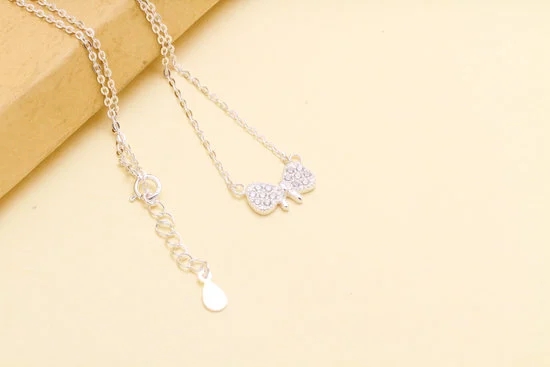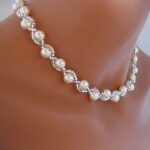How do you know if handmade jewelry is vintage? Vintage jewelry holds a special place in the fashion industry, but understanding what truly qualifies as vintage can be a bit tricky. In this article, we will explore the definition of vintage jewelry and how it differs from antique and retro pieces. We will also highlight the significance of vintage jewelry, particularly handmade pieces, in the world of fashion.
When identifying vintage handmade jewelry, there are specific characteristics and features to look for. Understanding what sets apart vintage handmade pieces from their modern counterparts is essential. Additionally, delving into the historical background of handmade jewelry is crucial in recognizing the cultural and artistic influences that have shaped these timeless creations.
As we further explore the topic, we will also discuss the materials commonly used in vintage handmade jewelry and how they contribute to the overall value of each piece. Methods for dating vintage handmade jewelry and assessing its age based on design, craftsmanship, and hallmarks will also be examined. Additionally, we will analyze the level of skill and artistry involved in creating vintage handmade jewelry to understand its authenticity and value.
The market value of vintage handmade jewelry is another significant aspect that will be covered in this article. Understanding how market value is determined and the factors that influence pricing will provide valuable insight for collectors and enthusiasts alike. Lastly, tips for proper care and maintenance of vintage handmade jewelry will be shared to help preserve the beauty and quality of these timeless pieces for years to come.
Identifying Vintage Handmade Jewelry
When it comes to identifying vintage handmade jewelry, there are several key factors to consider in order to determine the authenticity and age of a piece. From examining the materials used to assessing the craftsmanship, understanding how to identify vintage handmade jewelry is essential for collectors and enthusiasts alike.
What to Look For
When searching for vintage handmade jewelry, it’s important to pay attention to certain characteristics that differentiate it from modern pieces. Look for handcrafted details such as irregular shapes, unique engravings, and variations in gemstone settings. Vintage jewelry often showcases intricate designs and a level of artistry that sets it apart from mass-produced items.
Key Characteristics
Vintage handmade jewelry is often characterized by its use of high-quality materials such as sterling silver, gold, and semi-precious stones. Pay attention to the patina or signs of aging on the metal, as well as any maker’s marks or hallmarks indicating the origin and date of production. These distinguishing features can help verify the authenticity and provenance of a vintage piece.
Distinguishing Features
In addition to specific design elements, there are other distinguishing features that can help identify vintage handmade jewelry. Look for evidence of hand-finishing techniques such as filing or soldering marks, as well as visible signs of wear that reflect the item’s history and age. By closely examining these details, you can gain insight into the true nature of a piece and determine whether it is genuinely vintage or merely a reproduction.
By understanding these key factors, individuals can become more adept at recognizing genuine vintage handmade jewelry and appreciating its historical and artistic significance in the world of adornment.
Researching the History of Handmade Jewelry
When it comes to identifying vintage handmade jewelry, understanding its historical background is crucial in determining its authenticity and value. Delving into the historical context of handmade jewelry allows collectors and enthusiasts to appreciate the cultural and artistic influences that have shaped this art form over the years.
Here are some key points to consider when researching the history of handmade jewelry:
- Historical Background: Researching the origins and evolution of handmade jewelry provides valuable insight into the various techniques, styles, and designs that have emerged over time. It also sheds light on the cultural significance of different types of jewelry across civilizations.
- Cultural and Artistic Influences: Understanding how historical events, traditions, and artistic movements have influenced the creation of handmade jewelry enables collectors to identify distinct characteristics that reflect specific time periods and regions. This knowledge is essential in distinguishing genuine vintage pieces from modern reproductions.
- Evolution of Techniques: Examining the development of craftsmanship and production methods in handmade jewelry helps in recognizing authentic vintage pieces based on their intricate details, unique embellishments, and traditional artisanal skills.
By researching the history of handmade jewelry, individuals can gain a deeper appreciation for these timeless pieces while acquiring the knowledge necessary to distinguish vintage items from contemporary ones. This understanding ultimately contributes to a more informed approach in evaluating and collecting vintage handmade jewelry.
Evaluating the Materials Used in Vintage Handmade Jewelry
When evaluating the materials used in vintage handmade jewelry, it is essential to consider the various components that contribute to the overall value and quality of a piece. Vintage handmade jewelry often features precious metals such as gold, silver, and platinum, as well as gemstones like diamonds, rubies, sapphires, and emeralds. These materials not only add aesthetic appeal to the jewelry but also hold historical and cultural significance.
One key aspect to look for when assessing the materials of vintage handmade jewelry is the craftsmanship and level of detail in the design. Handmade pieces are often intricately designed and feature unique patterns or motifs that showcase the artisan’s skill and artistry. This attention to detail can be seen in the use of filigree work, intricate engravings, and fine metalwork that make vintage handmade jewelry stand out from mass-produced modern pieces.
In addition to precious metals and gemstones, vintage handmade jewelry may also incorporate other materials such as enamel, ivory, coral, or pearls. These materials were commonly used in different time periods and regions around the world, each carrying its own historical and cultural significance. By carefully examining these materials and their use in vintage handmade jewelry, collectors can gain a deeper understanding of the craftsmanship and artistry behind each piece.
| Materials | Significance |
|---|---|
| Precious Metals (Gold, Silver) | Adds value; cultural significance |
| Gemstones (Diamonds,Rubies,Sapphires) | Aesthetic appeal; historical significance |
| Filigree Work & Engravings | Attention to detail; artisan’s skill |
Determining the Age of Vintage Handmade Jewelry
Methods for Dating Vintage Handmade Jewelry
When determining the age of vintage handmade jewelry, there are several methods that can be used. One common approach is to examine the design and style of the piece. Different eras in history were characterized by distinct design trends, and these can help pinpoint when a piece was created.
For example, Art Nouveau jewelry was prominent in the late 19th and early 20th centuries, while Art Deco designs were popular in the 1920s and 1930s. Additionally, examining the craftsmanship and techniques used in creating the jewelry can provide clues to its age. Changes in technology and manufacturing processes over time have influenced the way handmade jewelry is produced, allowing experts to identify specific time periods based on these factors.
Another method for dating vintage handmade jewelry is through the analysis of hallmarks or maker’s marks. Many vintage pieces are stamped with symbols or initials that indicate where and when they were made, as well as who crafted them. By researching these markings and understanding their significance within different historical contexts, it is possible to determine the approximate age of a piece.
Tips for Assessing the Age of a Piece
In addition to specific methods for dating vintage handmade jewelry, there are also general tips for assessing the age of a piece. Examining any wear or patina on the metal can offer insight into how long a piece has been in existence.
Natural aging processes affecting metals such as brass, copper, and silver can provide valuable information about a piece’s age. Furthermore, understanding the history of certain gemstones or materials commonly used in vintage jewelry can aid in dating a piece based on what was accessible during different time periods.
Careful observation of any historical references or cultural influences present in a piece can also help determine its age. For example, motifs inspired by ancient civilizations or artistic movements from specific time periods can reveal when a piece was created and what historical events may have influenced its design.
Authenticity and Value Based on Age
The age of vintage handmade jewelry plays a significant role in determining its authenticity and value. Collectors and enthusiasts often seek out pieces from specific eras due to their historical significance and rarity. As such, older pieces with well-documented provenance may command higher prices on the market than newer ones. Understanding how to accurately assess the age of vintage handmade jewelry is crucial for both buyers and sellers in establishing its authenticity and worth.
Assessing the Craftsmanship of Vintage Handmade Jewelry
When trying to determine if a piece of handmade jewelry is vintage, assessing the craftsmanship of the piece is essential. Vintage handmade jewelry often exhibits a level of skill and artistry that sets it apart from mass-produced modern pieces. Here are a few key aspects to look for when evaluating the craftsmanship of vintage handmade jewelry:
- Attention to Detail: Vintage handmade jewelry is known for its intricate details and fine craftsmanship. Look for precise and delicate work, such as carefully set gemstones, intricate metalwork, and meticulous engraving.
- Quality of Materials: Another indicator of the quality of craftsmanship in vintage handmade jewelry is the materials used. High-quality metals, such as sterling silver or gold, along with genuine gemstones or pearls, are often found in vintage pieces. These materials not only contribute to the overall value but also reflect the level of care and skill put into crafting the jewelry.
- Unique Design Elements: Vintage handmade jewelry often showcases unique design elements that reflect the time period and artistic influences that were prominent at the time of creation. Look for distinctive motifs, ornate filigree work, and artistic flourishes that set vintage pieces apart from more contemporary styles.
By carefully examining these aspects of craftsmanship in vintage handmade jewelry, you can gain insight into the authenticity and value of a piece. Paying attention to these details can provide valuable clues about whether a piece is truly vintage or simply a modern reproduction attempting to capture the charm and appeal of bygone eras.
Understanding the Market Value of Vintage Handmade Jewelry
Vintage handmade jewelry holds a special place in the fashion industry due to its uniqueness and historical significance. As a result, it often commands a high market value. One of the main factors that determine the market value of vintage handmade jewelry is its rarity. Unlike mass-produced modern jewelry, vintage pieces are usually one-of-a-kind or produced in limited quantities, making them highly sought after by collectors and enthusiasts.
Another important factor in assessing the market value of vintage handmade jewelry is the designer or maker behind the piece. Jewelry crafted by renowned artisans or designers can fetch significantly higher prices, especially if they have a well-documented history of creating exceptional pieces. Additionally, pieces that are associated with specific design movements or eras, such as Art Nouveau or Art Deco, also tend to have higher market values due to their historical and cultural significance.
Furthermore, the condition of vintage handmade jewelry plays a crucial role in determining its market value. Pieces that have been well-maintained and preserved over time, with minimal signs of wear and tear, will typically command higher prices than those that show extensive damage or deterioration. Collectors and buyers are willing to pay more for pieces that retain their original beauty and craftsmanship.
Overall, understanding the market value of vintage handmade jewelry requires an appreciation for its rarity, craftsmanship, historical importance, and condition. By considering these factors when assessing the value of a piece, collectors and enthusiasts can make informed decisions when buying or selling vintage handmade jewelry.
| Factors | Impact on Market Value |
|---|---|
| Rarity | Holds high market value due to uniqueness and limited quantities |
| Designer/Artisan | Pieces crafted by renowned makers command higher prices; association with specific design movements increases value |
| Condition | Well-preserved pieces in good condition fetch higher prices than those showing extensive wear |
Caring for and Preserving Vintage Handmade Jewelry
In conclusion, determining whether handmade jewelry is truly vintage involves a multi-faceted approach that combines historical research, material evaluation, and craftsmanship assessment. Understanding the definition of vintage jewelry is crucial in distinguishing it from antique and retro pieces, as well as recognizing its significance in the fashion industry.
Identifying vintage handmade jewelry requires a keen eye for key characteristics and features that set it apart from modern pieces, as well as thorough knowledge of the cultural and artistic influences on vintage jewelry.
Researching the history of handmade jewelry not only provides insight into its origins and development but also aids in dating individual pieces. Evaluating the materials used in vintage handmade jewelry and assessing their craftsmanship are essential steps in determining authenticity and value. Understanding the market value of vintage handmade jewelry further solidifies one’s knowledge and appreciation for these unique pieces, while learning how to properly care for and preserve them ensures their beauty and quality for years to come.
In today’s world where mass-produced items dominate the market, genuine vintage handmade jewelry stands out as a testament to artistic skill, cultural heritage, and timeless beauty. With a deeper understanding of what defines vintage handmade jewelry, collectors and enthusiasts can confidently identify and appreciate these valuable pieces for generations to come.
So next time you come across a piece of handmade jewelry claiming to be “vintage,” you’ll have the knowledge to determine if it truly fits the bill.
Frequently Asked Questions
How Do I Know if My Jewelry Is Vintage?
You can determine if your jewelry is vintage by looking at specific characteristics such as the style, design, materials used, and any marks or stamps indicating the maker or time period. Vintage jewelry often has a distinct look that reflects the trends of a particular era.
Is There a Way to Tell How Old Jewelry Is?
There are several ways to tell how old jewelry is. One way is to examine any hallmarks, signatures, or logos on the piece which can give clues about its age and origin. Additionally, the type of clasp, setting, and metal used can also provide insights into the jewelry’s age.
How Old Must Jewelry Be to Be Called Vintage Jewelry?
The term “vintage” typically refers to items that are at least 20 years old. Therefore, in the context of jewelry, pieces must generally be from the 1990s or earlier to be considered vintage. However, keep in mind that some experts may have different criteria for what qualifies as vintage jewelry.

Welcome to my jewelry blog! My name is Sarah and I am the owner of this blog.
I love making jewelry and sharing my creations with others.
So whether you’re someone who loves wearing jewelry yourself or simply enjoys learning about it, be sure to check out my blog for insightful posts on everything related to this exciting topic!





